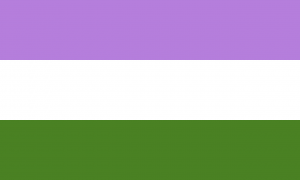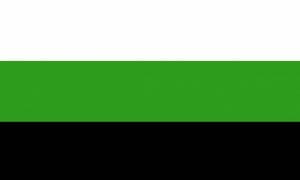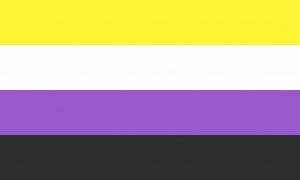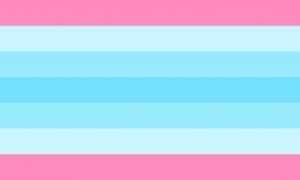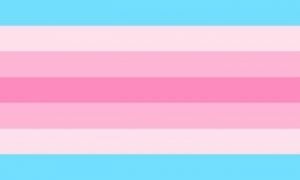This is a reference page explaining terms that are used in conversations around gender. I’ll be adding to it over time as I learn more.
Things covered on this page:
- Things to know about gender
- Transgender vocabulary
- Alphabetical list of gender identities
Things to know about gender
Before we dive into the vocab list, here are some general concepts to understand about gender.
Gender isn’t the same as orientation
This page is specifically about gender, which is different from orientation.
The orientation of a person is all about sexual attraction. People can be sexually attracted to the same gender (e.g. gay, lesbian, straight), multiple genders (e.g. bisexual, pansexual), or not attracted to any (e.g. asexual).
I talk more about the differences between this things in this article.
This article does not cover orientation beyond what you just read. Instead I focus on gender, which has to do with a person’s sense of self.
There’s lots of overlap between terms
Many of the terms fit together and overlap with each other. Multiple terms can describe the same person at once. Gender identities aren’t just a huge list of individual terms—think of it more like a very interlinked network with parent terms, child terms, and terms that overlap with each other.
Here’s an example of some of that at work. This chart is a little bit oversimplified, especially considering the fact that there are nonbinary people who aren’t transgender, but for basic context it will help you see that there are taxonomies to how these terms fit together. Just remember, this is a complex subject, so not everything fits into a tidy box with a tidy label!

Gender identities aren’t just male, female, and in-between
Gender doesn’t fall on a strictly male–female spectrum. There are aspects of the spectrum outside of that. For example, agender people (like me) lack gender altogether. On the other hand, some people experience a combination of genders, or multiple different genders at once.
It’s not just a line from male to female. This chart gives you a little bit of an idea of how some of that works together.

Transgender vocabulary
AFAB & AMAB: These are abbreviations for “Assigned Female At Birth,” and “Assigned Male At Birth,” respectively. These terms reference the sex designated by medical professionals and placed on a person’s legal documentation when they were born.
Bioessentialism: An outdated and unscientific belief that someone’s “biological sex” dictates their gender.
Binarism: A prejudice against people who aren’t strictly male or female.
Binary genders: Genders that are either man or woman. (A binary person may or may not be transgender.)
Cisgender: A person whose gender aligns with the gender they were assigned at birth; not transgender. Sometimes shortened to “cis.”
FTM & MTF: Abbreviations for “Female to Male” and “Male to Female” respectively. FTM (sometimes FtM) is typically used in reference to trans men who are undergoing a transition (either socially, medically, or both), and MTF (sometimes MtF) is used in reference to trans women undergoing a transition. These terms are slightly controversial; use with caution.
Gatekeeping: The act of creating laws, regulations, and criteria for people to comply to before allowing them to identify as transgender or receive transgender healthcare.
Gender dysphoria: A profound sense of unease coming from the fact that the person you are is being distorted beyond recognition.
Medical transition: Various medical procedures that help align a person’s physical body with the person they know themselves to be.
Misgendering: When a person is referred to as a gender that is not accurate to who they really are.
Neopronouns: a word that literally means “new pronouns.” These pronouns are used to reference people of different genders with a higher degree of nuance.
Social transition: The act of shifting a person’s life to align more with their gender. Includes things like changing your name, changing the gender on your birth certificate, adjusting how you dress, asking people to use different pronouns in reference to you.
Transgender: A person who was assigned a gender at birth that doesn’t match their true gender.
Transgender man: a person who was assigned the female gender at birth, but whose gender is actually male.
Transgender woman: a person who was assigned male at birth, but whose gender is actually female.
Transmedicalism: The false belief that the only people who can be transgender are people with body dysphoria.
Truscum: a group of people who hold the dangerous belief that there are true transgender people and fake transgender people.
Alphabetical list of gender identities
Here’s a list of gender identities with their associated gender pride flag. (You can learn more about gender pride flags and their meanings here.) This is not a comprehensive list—there are many gender identities.
Agender
A person with no gender. “A” means “without,” so the word literally means “without gender.”
Falls under the nonbinary umbrella, which falls under the transgender umbrella. I’m an example of an agender person.
Androgyne

A person whose gender is some combination of male and female, possibly but not necessarily in equal amounts.
“Andro” means “male,” and “gyne” means female, so the word itself is a combination of those two genders.
Falls under the nonbinary umbrella, which falls under the transgender umbrella.
Bigender
A person who has two genders they either switch between or experience simultaneously. This identity falls under the nonbinary umbrella, which falls under the transgender umbrella. Bigender people can be AFAB or AMAB.
Demiboy & Demigirl
A person whose gender is somewhat male, but not entirely, or somewhat female, but not entirely (respectively). A demiboy may be AMAB or AFAB. Likewise a demigirl can be AMAB or AFAB.
Both of these identities fall under the nonbinary umbrella, which falls under the transgender umbrella.
Gender fluid
A genderfluid person is someone whose gender varies in a fluid way between two or more genders. This gender identity falls under the nonbinary umbrella, which falls under the transgender umbrella. Genderfluid people can be AFAB or AMAB.
Genderqueer
A term that came into use before the word “nonbinary” to describe a person whose gender identity is outside of the gender binary. Still regularly used, sometimes interchangeably with nonbinary.
Neutrois
A person whose gender is neutral or absent. Neutrois is an umbrella term which includes a variety of genders, including agender.
Falls under the nonbinary umbrella, which falls under the transgender umbrella.
Nonbinary
A person who is neither male nor female; an umbrella term for all the genders that are not strictly binary. Falls under the transgender umbrella (though some nonbinary people don’t consider themselves to be transgender, and there are many complex and valid reasons for this).
Transmasculine and transfeminine
These words reference people who are trans in the direction of masculinity or femininity, respectively. Transmasculine people may be transgender men, or they may be nonbinary. Transfeminine people may be transgender women, or they may be nonbinary. These words are sometimes abbreviated to “transmasc” and “transfem.”
Woman & Man
You probably already know about these gender identities. 😉 There are cisgender and transgender women—both of which are equally women, and there are cisgender and transgender men—both of which are equally men.
I’m still learning, too
Our understanding of gender as a society is growing at a rapid pace. I’m doing what I can not to just bring others along, but to keep up with that growth in how I explain terms and concepts. Everything I write on this site is part of my learning process.
This means that all of the pages here, including this one, are regularly being revised as I learn new things. If you have resources with more advanced perspectives to share with me, I always appreciate them.
Other resources on this site:






